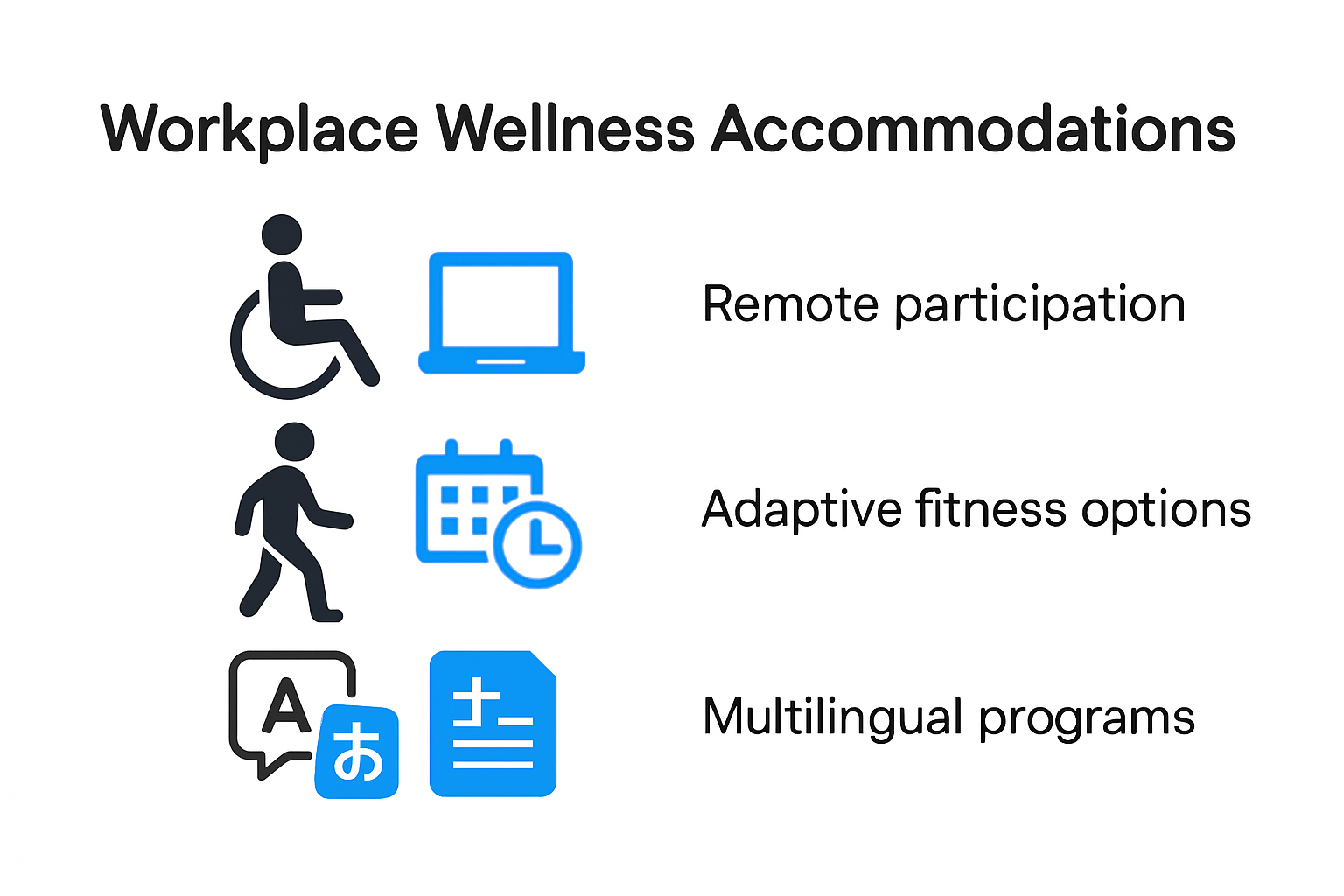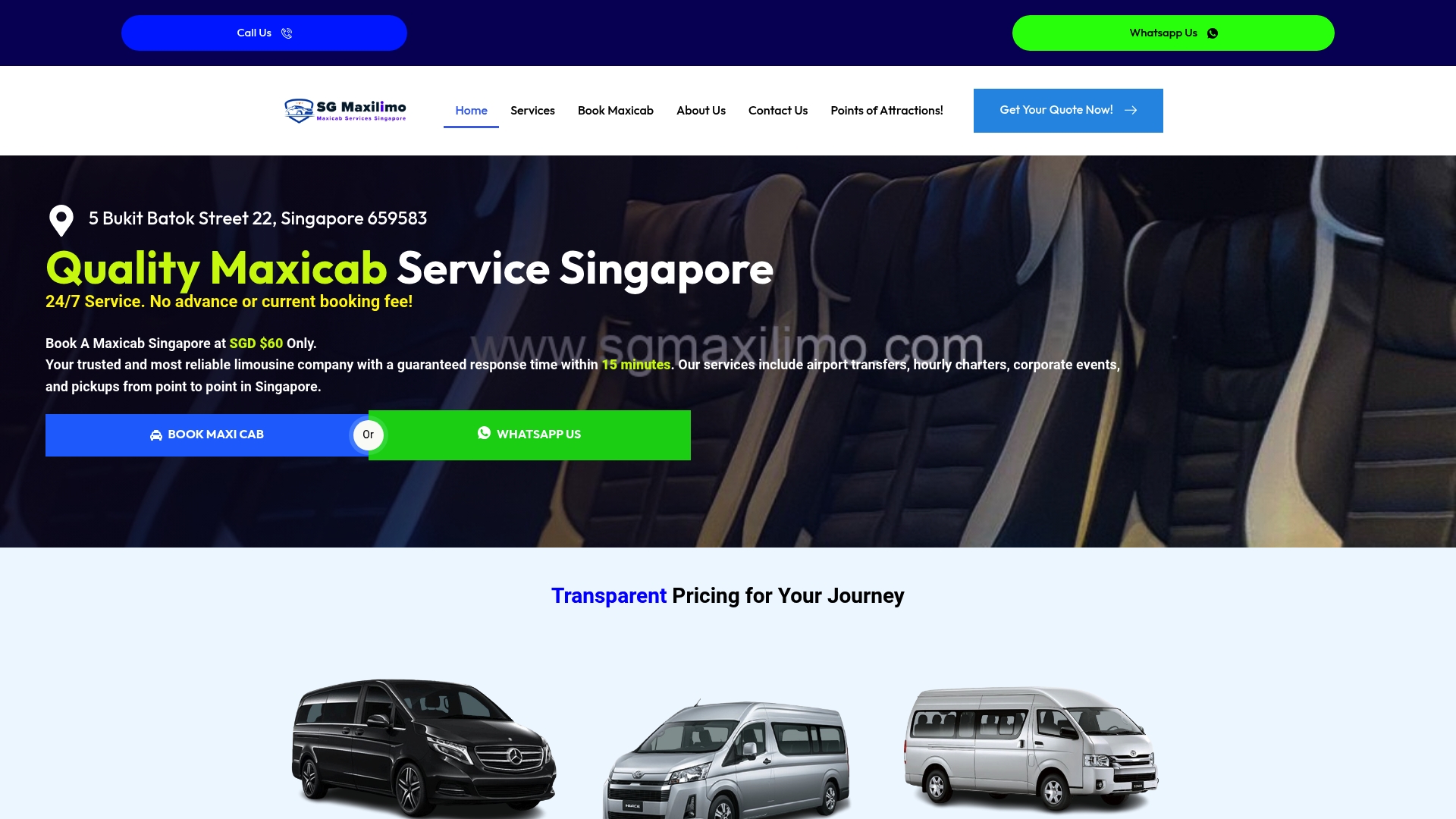Corporate Wellness Programs: Boosting Wellbeing for Modern Travelers and Teams
Explore how corporate wellness programs enhance health and productivity for business travelers, families, corporate clients, and event organizers.

Corporate wellness programs sound like company perks that just make people feel good at work. Then you see the numbers and it hits differently. Businesses report up to $3 back for every $1 spent on wellness programs. That might seem impressive enough but the real surprise is how these programs have evolved to help not just office workers but traveling teams and modern professionals scattered around the globe. The real story is how wellness suddenly means more than just step challenges and fruit bowls in the break room.
Table of Contents
- Understanding Corporate Wellness Programs And Their Purpose
- Benefits For Business Travelers And Tourists
- Adapting Wellness Initiatives For Diverse Needs And Accommodations
- Choosing The Right Wellness Program For Your Organization
Quick Summary
| Takeaway | Explanation |
| Invest in comprehensive wellness programs. | These programs enhance employee health and productivity, reducing healthcare costs and absenteeism. |
| Adapt wellness initiatives for diverse needs. | Inclusive strategies ensure accessibility and respect individual differences, fostering a supportive work environment. |
| Focus on business travelers’ wellness. | Tailored strategies help manage stress and promote health for those on the go, improving their performance. |
| Regularly assess wellness program effectiveness. | Continuous evaluation allows organizations to adapt offerings based on employee feedback and emerging health trends. |
| Integrate financial and operational plans. | Effective wellness programs balance health objectives with budget considerations, making them sustainable in the long run. |
Understanding Corporate Wellness Programs and Their Purpose
Corporate wellness programs represent strategic organizational initiatives designed to support and enhance employee health, productivity, and overall wellbeing. These comprehensive approaches go beyond traditional healthcare benefits by proactively addressing physical, mental, and emotional health challenges in modern workplace environments.
The Holistic Framework of Employee Wellness
Modern corporate wellness programs are multifaceted systems that recognize the interconnected nature of employee health. According to the CDC’s Work@Health Program, these programs aim to promote healthy behaviors among workers, leading to improved quality of life and reduced medical costs associated with chronic diseases. The fundamental goal is creating a supportive ecosystem that empowers employees to make informed health decisions.
These programs typically encompass several key dimensions:
To help clarify the different types of wellness initiatives included in modern corporate wellness programs, the following table summarizes their key dimensions and related examples.
| Dimension | Example Initiatives |
| Physical Health Initiatives | Health screenings, fitness challenges, nutrition counseling |
| Mental Wellness Support | Stress management workshops, counseling, meditation programs |
| Financial Wellbeing Resources | Retirement planning, financial education seminars |
| Work Life Balance Strategies | Flexible scheduling, remote work options |
- Physical Health Initiatives: Regular health screenings, fitness challenges, nutrition counseling
- Mental Wellness Support: Stress management workshops, counseling services, meditation programs
- Financial Wellbeing Resources: Retirement planning, financial education seminars
- Work Life Balance Strategies: Flexible scheduling, remote work options
Measuring Impact and Organizational Benefits
Research from the U.S. Bureau of Labor Statistics highlights that successful programs create supportive workplace environments that offer prevention-focused health education and incentivize healthy employee behaviors. These initiatives are not mere altruistic gestures but strategic investments with measurable returns.
A systematic review published in PubMed revealed compelling evidence of corporate wellness programs’ economic advantages. Organizations implementing comprehensive wellness strategies experience significant benefits, including:
- Reduced healthcare expenditures
- Decreased employee absenteeism
- Enhanced workforce productivity
- Improved employee retention and recruitment
Strategic Implementation Considerations
Effective corporate wellness programs require thoughtful design and continuous adaptation. They must be tailored to an organization’s unique cultural context, employee demographics, and specific health challenges. Successful implementation involves collaborative approaches that engage employees, leverage technological solutions, and maintain flexibility in program design.
Key strategic elements include:
- Regular health risk assessments
- Personalized wellness recommendations
- Technology-enabled tracking and engagement
- Data-driven program refinement
- Leadership commitment and role modeling
By embracing a comprehensive approach to employee wellness, organizations can create environments that support individual health while simultaneously driving collective performance and organizational resilience. Corporate wellness programs are no longer optional luxuries but essential strategies for maintaining competitive, healthy, and motivated workforces in an increasingly complex professional landscape.
Benefits for Business Travelers and Tourists
Corporate wellness programs have evolved to address the unique challenges faced by business travelers and tourists, recognizing that health and wellbeing extend far beyond traditional workplace boundaries. These specialized approaches provide comprehensive support systems designed to maintain physical, mental, and emotional balance during travel.
Wellness Strategies for Mobile Professionals
Business travelers encounter unique stressors that can significantly impact their overall health and productivity. According to the Global Wellness Institute, wellness tourism expenditures reached $830 billion in 2023, underscoring the growing importance of integrated wellness solutions for travelers.
Key wellness strategies for mobile professionals include:
- Physical Health Management: Tailored fitness resources, nutrition guidance, and travel-friendly exercise programs
- Mental Resilience Training: Stress reduction techniques, mindfulness apps, and adaptive coping mechanisms
- Recovery and Restoration: Sleep optimization strategies, jet lag management, and recovery-focused interventions
Holistic Travel Wellness Approaches
Research published in the National Center for Biotechnology Information reveals that wellness tourism activities can significantly enhance personal and professional performance. Individuals participating in structured wellness programs during travel report feeling more energetic, calmer, and better equipped to solve complex problems.
Comprehensive wellness programs for travelers typically incorporate:
- Pre-travel health assessments
- Personalized wellness recommendations
- Real-time health monitoring technologies
- Emergency medical support networks
- Cultural adaptation and stress management resources
Economic and Productivity Implications
The U.S. Chamber of Commerce highlights that wellness initiatives can generate substantial returns, with programs yielding $2 to $3 for each dollar invested. For business travelers, this translates into tangible benefits such as:
- Reduced travel-related health risks
- Enhanced cognitive performance
- Improved emotional resilience
- More effective cross-cultural interactions
- Greater overall job satisfaction
By integrating comprehensive wellness strategies, organizations demonstrate a commitment to employee wellbeing that transcends traditional workplace boundaries. These programs recognize that modern professionals require flexible, adaptive support systems that acknowledge the complex interplay between travel, health, and professional performance.
Ultimately, corporate wellness programs for travelers are not just about preventing illness but about empowering individuals to perform at their best, regardless of their location or professional demands. They represent a forward-thinking approach to human capital management that prioritizes holistic health and sustainable performance.
Adapting Wellness Initiatives for Diverse Needs and Accommodations
Corporate wellness programs must evolve beyond one-size-fits-all approaches to genuinely support employees with diverse abilities, backgrounds, and individual health requirements. Inclusive wellness strategies recognize that effective health initiatives must be adaptable, accessible, and respectful of individual differences.
Designing Universally Accessible Wellness Programs
The National Center on Health, Physical Activity and Disability emphasizes the critical importance of creating comprehensive wellness programs that accommodate employees with varying physical and cognitive abilities. Universal design principles ensure that wellness resources are available to everyone, regardless of individual limitations.
Key considerations for inclusive wellness design include:

- Flexible Participation Options: Multiple engagement formats
This table outlines key strategies for implementing inclusive and universally accessible corporate wellness programs, as discussed in the section.
| Inclusive Design Consideration | Description |
| Flexible Participation Options | Offer multiple engagement formats |
| Technology Adaptations | Ensure compatibility with assistive technology |
| Customizable Health Goals | Provide personalized wellness pathways |
| Alternative Activity Modifications | Scale fitness and wellness options as needed |
- Technology Adaptations: Assistive technology compatibility
- Customizable Health Goals: Personalized wellness pathways
- Alternative Activity Modifications: Scalable fitness and wellness options
Legal and Ethical Accessibility Frameworks
According to the American Medical Association’s Journal of Ethics, workplace wellness programs must comply with legal standards of accessibility, particularly under the Americans with Disabilities Act. This requires proactive approaches that prioritize individual health needs while preventing discrimination.
Effective inclusive wellness strategies should:
- Provide clear communication about program accessibility
- Offer confidential health assessments
- Create non-discriminatory participation pathways
- Develop personalized wellness recommendations
- Ensure reasonable accommodations for all participants
Cultural Sensitivity and Holistic Wellness Approaches
The Vermont Department of Health highlights the importance of creating wellness programs that respect cultural diversity and individual preferences. This means developing initiatives that are sensitive to different religious practices, cultural backgrounds, and personal health beliefs.
Comprehensive cultural wellness considerations include:
- Multilingual program resources
- Diverse representation in wellness materials
- Flexible scheduling for wellness activities
- Respect for dietary and religious restrictions
- Culturally appropriate health education
By embracing a truly inclusive approach, organizations can create wellness programs that not only support physical health but also foster a sense of belonging and respect. These initiatives recognize that employee wellness is a complex, multifaceted journey that requires empathy, flexibility, and a commitment to individual dignity.
Ultimately, successful corporate wellness programs transcend mere health interventions. They become powerful tools for building organizational culture, demonstrating genuine care for employees, and creating environments where every individual feels valued, supported, and empowered to pursue their optimal health and wellbeing.
Choosing the Right Wellness Program for Your Organization
Selecting an appropriate corporate wellness program requires strategic planning, thoughtful evaluation, and a comprehensive understanding of organizational needs. The right wellness initiative can transform workplace culture, enhance employee engagement, and generate significant long-term benefits for both staff and the organization.
Comprehensive Program Assessment Framework
According to research from the Interdisciplinary Center for Healthy Workplaces, organizations must conduct a thorough assessment before implementing wellness programs. This involves understanding organizational demographics, existing health challenges, and specific workforce requirements.
Key assessment criteria include:
- Organizational Culture Alignment: Ensuring program resonates with company values
- Employee Demographics: Matching wellness offerings to workforce characteristics
- Budget Constraints: Developing cost-effective wellness solutions
- Technological Infrastructure: Leveraging digital wellness platforms
Strategic Implementation Considerations
Research published in the Kaiser Family Foundation reveals that approximately half of employer wellness programs have limited service offerings. Successful implementation requires a nuanced approach that considers multiple factors beyond basic health interventions.
Critical implementation strategies encompass:
- Conducting comprehensive employee health risk assessments
- Developing personalized wellness pathways
- Creating measurable program objectives
- Establishing clear participation incentives
- Implementing robust tracking and evaluation mechanisms
Financial and Operational Considerations
The National Institutes of Health emphasizes that effective wellness programs balance employee health objectives with organizational financial considerations. Employers must carefully design policies that provide meaningful incentives while maintaining cost-effectiveness.
Strategic financial considerations include:
- Analyzing potential healthcare cost reductions
- Evaluating return on wellness investment
- Exploring tiered program implementation
- Developing sustainable funding models
- Creating flexible participation structures
Successful wellness programs transcend traditional healthcare interventions. They represent holistic strategies that integrate physical, mental, and professional development aspects. Organizations must view these initiatives as long-term investments in human capital rather than short-term expense items.
Ultimately, choosing the right wellness program requires a dynamic, adaptive approach. Regular assessment, employee feedback, and willingness to evolve are crucial. The most effective programs are those that remain responsive to changing workforce needs, technological advancements, and emerging health research.
By approaching wellness program selection as a strategic organizational decision, companies can create transformative initiatives that support employee wellbeing, enhance productivity, and contribute to a positive, health-focused workplace culture.
Frequently Asked Questions
What are corporate wellness programs?
Corporate wellness programs are strategic initiatives designed to enhance employee health, productivity, and overall wellbeing by addressing physical, mental, and emotional health challenges in the workplace.
How can corporate wellness programs benefit business travelers?
Corporate wellness programs for business travelers provide support for managing stress, maintaining physical health, and improving mental resilience, ultimately enhancing their performance and job satisfaction while traveling.
Why is it important to adapt wellness initiatives for diverse employee needs?
Adapting wellness initiatives ensures accessibility and respect for individual differences, fostering an inclusive work environment that supports all employees regardless of their abilities or backgrounds.
How can organizations measure the effectiveness of their wellness programs?
Organizations can measure the effectiveness of their wellness programs through regular health risk assessments, employee feedback, participation rates, and evaluating overall health outcomes and productivity improvements.
Supercharge Your Corporate Wellness Journey With Seamless Group Transportation
Your team is striving for better wellness at work and on the road. Yet, arranging reliable and comfortable transport for business travelers, executives, or groups can undermine your wellness goals if the experience feels stressful or inaccessible. From airport runs to special events and everyday meetings, logistical challenges can drain energy and interrupt your plan for holistic wellbeing. That is where a tailored mobility solution really matters for modern teams seeking both productivity and peace of mind.

Elevate your wellness initiatives today by choosing a transportation partner you can trust. With SG Maxi Limo, you get flexible maxi cab and limousine booking options ideal for business groups, wheelchair users, and VIPs. Enjoy stress-free airport transfers, customizable hourly bookings, and wheelchair-accessible rides all while your travelers stay healthy and focused. Ready to match your wellness vision with hassle-free movement? Book your next ride now and support your team’s total wellbeing every step of the way.






